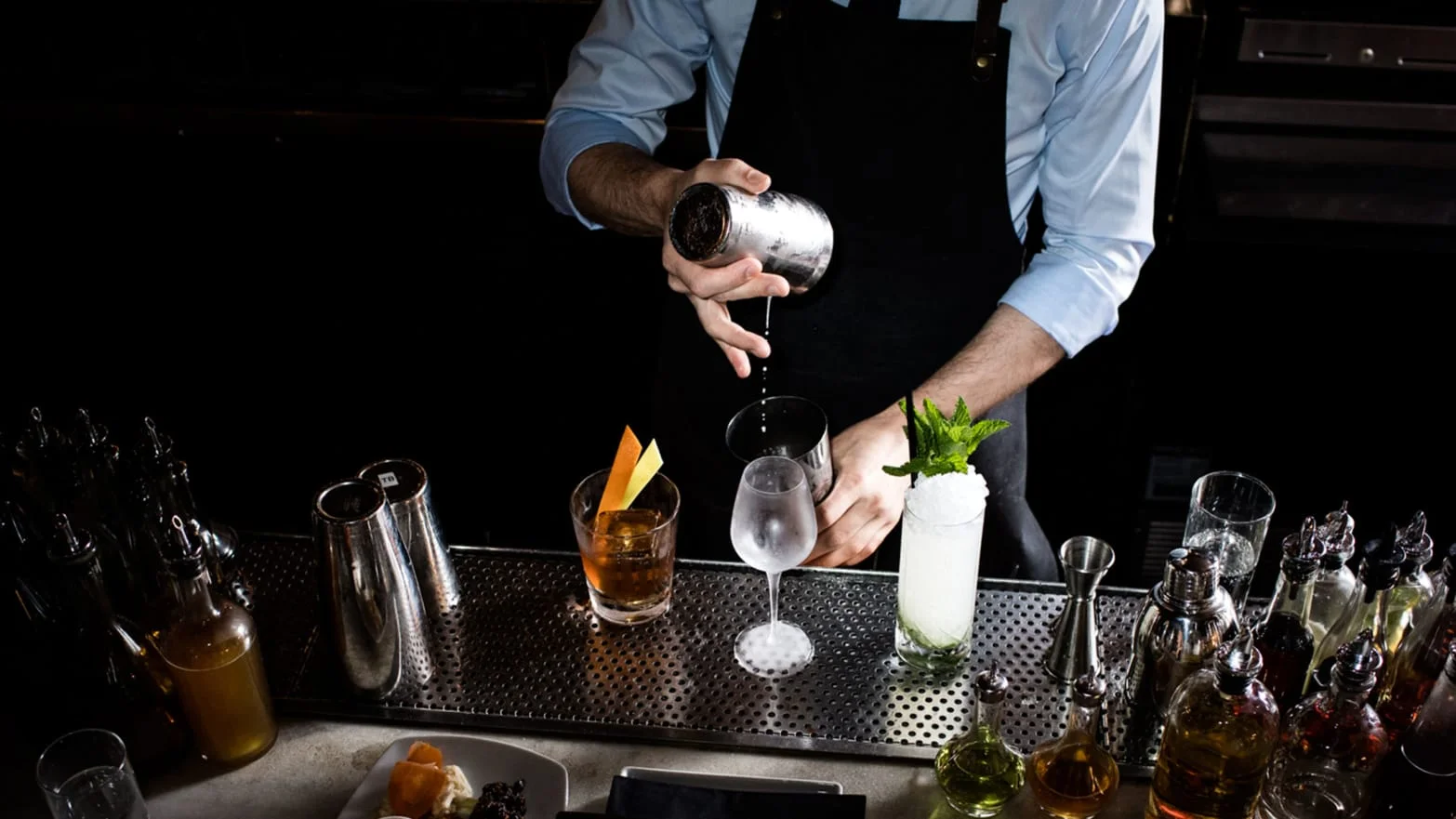BAR SETUP
THE BAR
Photo Death & Co Denver by Adam Larkey for Eater Denver
Setting up a bar is at best a piece of art. Through the years of trial and error, our industry has created certain standards for efficiency. Please read on to get a better idea of how to setup a bar…
BAR MATS
Photo by Erik Medsker for The Daily Beast
The main purpose of a bar mat is to keep the bar clean. From behind the bar, you’ll be utilizing three types of bar mats:
On bar top, on scuffer, under our feet
One acts as the ‘runway’ for the bar top. This is where garnishes are placed, and cocktails are served.
The ‘scuffer’ is where cocktails are built. Never build a drink with the glass in your hand, and never hold the glass over the ice in your well! Bring the ingredients to the glass as it rests on the scuffer.
In spite of our best efforts, it’s a messy profession. The mat under our feet serves as a slip guard that keeps us safe in spite of spills. TIP: Originally, these mats were intended to relieve pressure on the bartender’s feet, but it doesn’t really work like a Dr. Scholl’s commercial. So - if you’re working a full shift behind a bar, make sure you wear comfortable shoes.
EVERY BAR IS SET UP DIFFERENTLY!
In America, many folks have grown accustomed to the chain phenomenon of things being the same wherever they go. A McDonald’s in Albuquerque, New Mexico operates nearly identically to another in Pittsburgh, Pennsylvania. With perhaps a few exceptions such as the Cheesecake Factory or Applebee’s chains, you’ll find that no two bars are alike. Each has its own character, defined by its owners, staff, ambiance, and patrons. Some evolve constantly to keep up with the times and trends, some - like the Golden West Saloon in Fort Bragg, California keep the same cash register from their opening day in the late 1800’s! It’s the job of a bartender to adjust quickly to the environment, tools, and ingredients at hand.
The bar setup you see below is the minimal setup you will see at a bar. It’s best to start with minimal setup and add ingredients as you become more comfortable.
GARNISHES (1-15)
Garnishes belong on the bar top, as that’s the last stop a cocktail makes before it is served.
SPEED RACK (21-32)
Every bar (and bartender) will structure their speed rack a little differently, depending on what they will likely serve most frequently. However, you will most commonly find a setup that favors a right-handed bartender with spirits arranged light-to-dark from right-to-left:
Vodka, Gin, Rum, Tequila, Whiskey (Bourbon, Rye, Scotch, Irish, Brandy)
BOTTLE RAILS (16-20)
This is where your frequently used juices are stashed, keeping cool by the ice:
Lime, Lemon, Orange, Grapefruit, Cranberry
ICE BIN (center)
All bars build their wells around the ice bin, because you’ll need ice for almost everything you make and serve!
Always use the ice scooper
Never hold a glass over the ice!
(Glass in the ice = Burning the well)
THE COOLER
‘What’s cooler than being cool?’*
Commonly stored in the cooler:
Juices (backup)
Cut fruits, herbs, etc.
Bottled/Canned Beer
White Wines, Rosés, Champagne
Sweet & Dry Vermouths
*(if you said ‘ICE COLD!’ you are correct.)
First in/First Out: when stocking coolers, always pull the older items toward the front, and place the newest dated (freshest) items in back. This is how you maintain fresh inventory.



